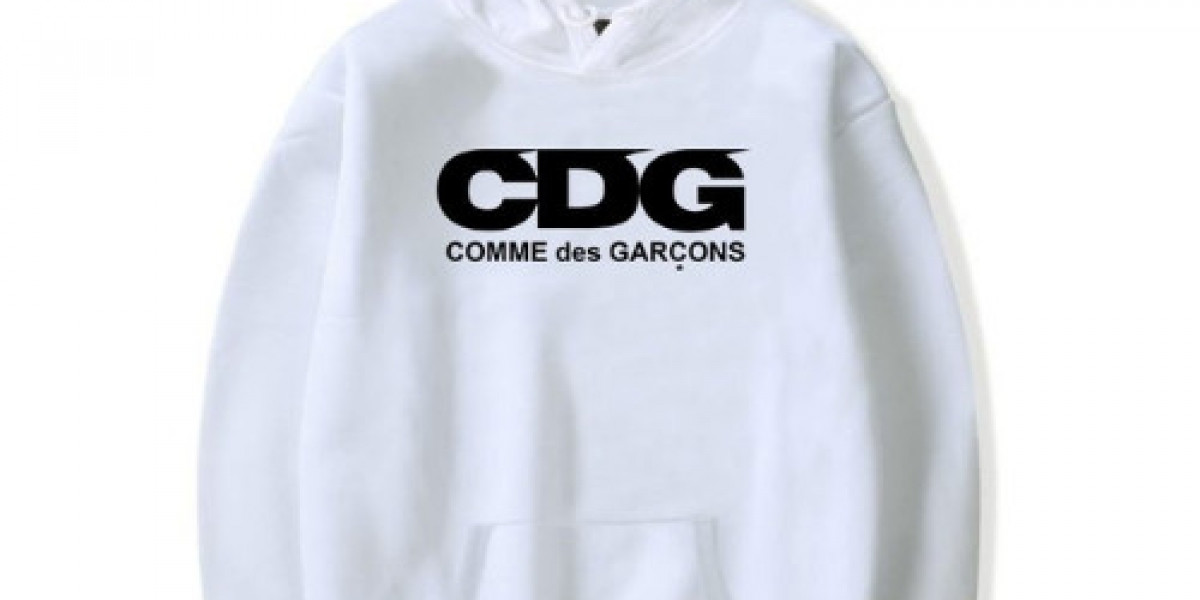In the ever-evolving world of fashion, few brands have managed to redefine the boundaries of creativity as powerfully as Comme des Garcons. Founded by Japanese designer Rei Kawakubo in 1969, Comme des Garçons has never been just another luxury fashion label. It is a philosophy, a statement, and an ongoing conversation about what fashion truly means. For over five decades, the brand has challenged conventions, disrupted norms, and turned imperfection into beauty.
More than simply designing clothes, Comme des Garçons has transformed the way the world sees fashion — not as a tool for conformity, but as a language of self-expression and artistic thought.
The Origins of Comme des Garçons
The story of Comme des Garçons begins in Tokyo, where Rei Kawakubo, who studied fine arts and literature, found herself drawn to fashion design as a form of creative freedom. The name “Comme des Garçons,” which translates to “like boys” in French, reflects her early desire to challenge traditional gender expectations in clothing.
In the 1970s, Kawakubo began developing a style that defied the conventions of the time. Her work was minimalist, androgynous, and often monochromatic. Instead of emphasizing the body’s form, her designs distorted it, creating shapes that were asymmetrical and abstract. This approach was radically different from the glamorous and highly structured styles dominating both Japanese and Western fashion at the time.
By the early 1980s, Comme des Garçons had become a phenomenon. When the brand debuted in Paris in 1981, it shocked the fashion establishment. The collection, filled with oversized silhouettes, torn fabrics, and all-black ensembles, defied the very concept of beauty. Critics initially dismissed it as “anti-fashion,” yet its influence spread rapidly, inspiring a new generation of designers and establishing Rei Kawakubo as one of the most important creative voices in the industry.
Rei Kawakubo’s Vision
At the core of Comme des Garçons lies Rei Kawakubo’s fearless vision. Her work does not simply follow trends; it questions them. Kawakubo’s designs often explore deep philosophical themes such as life, death, identity, and gender. She once described her process as “creating something that didn’t exist before.”
Her garments blur the line between fashion and sculpture. They are sometimes irregular, even uncomfortable, but always thought-provoking. Through deconstruction — the act of breaking down traditional design forms — she has built a language of imperfection and authenticity.
Kawakubo’s approach has never been about beauty in the conventional sense. Instead, she seeks to evoke emotion and curiosity. She believes that clothing should provoke thought — it should make people question what they are seeing and how they define aesthetics.
The Expansion of the Comme des Garçons Universe
Over the decades, Comme des Garçons has expanded far beyond its original line, evolving into a constellation of creative projects and sub-labels, each with its own identity.
Comme des Garçons Homme Plus, launched in 1984, reimagined men’s fashion with avant-garde tailoring and bold experimentation. Comme des Garçons Shirt took a more casual approach, reinterpreting classic menswear staples like the button-up shirt through innovative fabrics and patterns.
Then came Comme des Garçons Play, the most accessible and globally recognized sub-label. Introduced in 2002, Play embodies a minimalist aesthetic and is known for its iconic heart logo with two eyes, created by Polish artist Filip Pagowski. This playful design appears on T-shirts, hoodies, and sneakers, blending high fashion with everyday wearability.
Through these sub-lines, Kawakubo managed to reach both devoted avant-garde followers and a new generation of consumers seeking individuality within simplicity.
The Art of Collaboration
One of the reasons Comme des Garçons has remained culturally relevant for so long is its embrace of collaboration. The brand has partnered with a wide range of artists, designers, and companies — from luxury labels to streetwear icons.
Collaborations with Nike, Converse, and Supreme have introduced Comme des Garçons’ design ethos to broader audiences. Each collaboration maintains the label’s distinctive identity, fusing high concept artistry with practical design.
In fragrance, Comme des Garçons has also set itself apart. Its perfumes — such as Odeur 53 and Wonderwood — reject conventional sweetness in favor of scents that evoke nature, metal, and abstraction. They challenge expectations, much like the brand’s clothing.
Through these ventures, Comme des Garçons has shown that collaboration doesn’t mean compromise — it can be a dialogue between creativity and culture.
The Comme des Garçons Aesthetic
The aesthetic of Comme des Garçons is defined by contrast: structure and chaos, darkness and light, simplicity and complexity. The brand’s designs often feature asymmetrical cuts, unusual fabric combinations, and raw, unfinished edges. Black has long been a signature color, not as a symbol of mourning, but of neutrality — a blank canvas for emotion and form.
Over the years, Kawakubo has continued to surprise audiences by embracing new materials, vivid colors, and sculptural shapes. Some collections feature padded comme-des-garcons.uk forms that distort the body, while others explore themes of duality and fragmentation.
Yet, no matter how experimental, Comme des Garçons always retains its human element. The clothing may be avant-garde, but it is grounded in emotion, thought, and individuality.
Beyond Clothing: Dover Street Market and Global Influence
Rei Kawakubo and her husband, Adrian Joffe, expanded the Comme des Garçons vision into retail through Dover Street Market, a multi-brand concept store that redefines the shopping experience.
More than a retail space, Dover Street Market functions as an art installation. Each floor is curated to feel alive — filled with evolving installations, limited-edition collaborations, and curated displays of Comme des Garçons and other forward-thinking designers.
This approach mirrors Kawakubo’s philosophy: shopping should be an immersive, creative experience rather than a transactional one.
The influence of Comme des Garçons extends far beyond fashion. It has shaped architecture, retail, and even how people think about creativity. Designers like Yohji Yamamoto, Martin Margiela, and Junya Watanabe (a longtime Comme des Garçons collaborator) have all drawn inspiration from Kawakubo’s revolutionary approach to design.
The 2017 MET Exhibition and Lasting Legacy
In 2017, Rei Kawakubo became one of the few living designers to have a solo exhibition at the Metropolitan Museum of Art in New York. Titled Rei Kawakubo/Comme des Garçons: Art of the In-Between, the exhibition explored her decades-long exploration of dualities — such as beauty and ugliness, past and future, life and death.
The exhibition solidified her place not only in fashion history but also in the world of modern art. It recognized what many had long known: Rei Kawakubo is not merely a designer; she is a philosopher of form.
Conclusion
Comme des Garçons is not just a brand; it is a revolution that continues to shape how we perceive fashion and creativity. Rei Kawakubo’s designs reject predictability and celebrate individuality. Her work reminds us that fashion can be both intellectual and emotional, both wearable and conceptual.
In an industry often driven by commercialism and trend cycles, Comme des Garçons stands as a symbol of integrity — a testament to the power of vision, courage, and authenticity. Every collection, fragrance, and collaboration continues to challenge the boundaries of what fashion can be.







